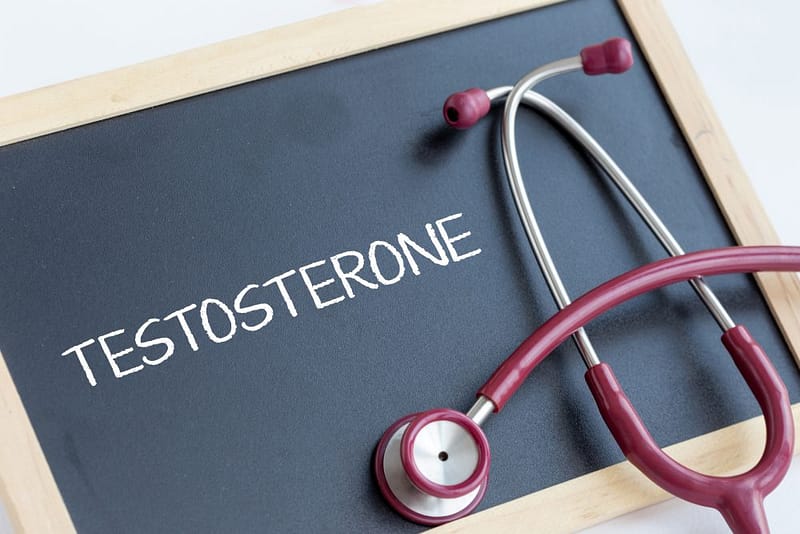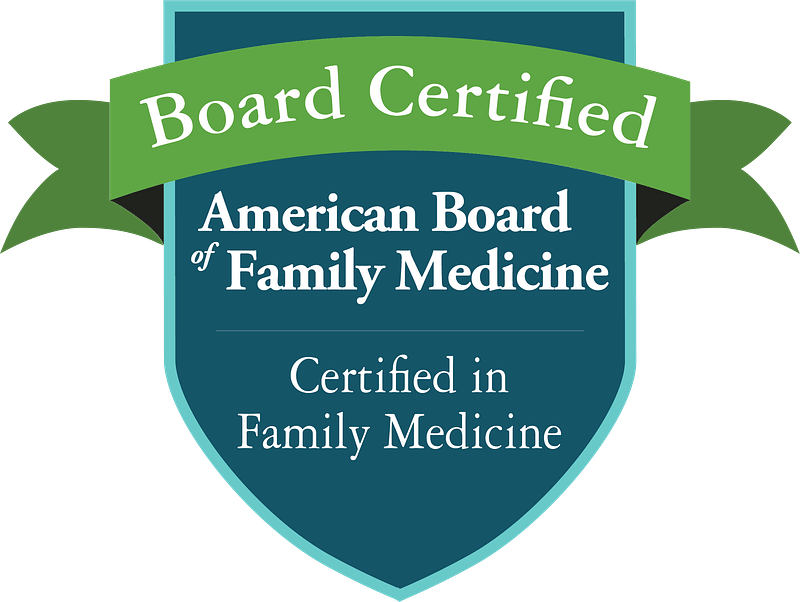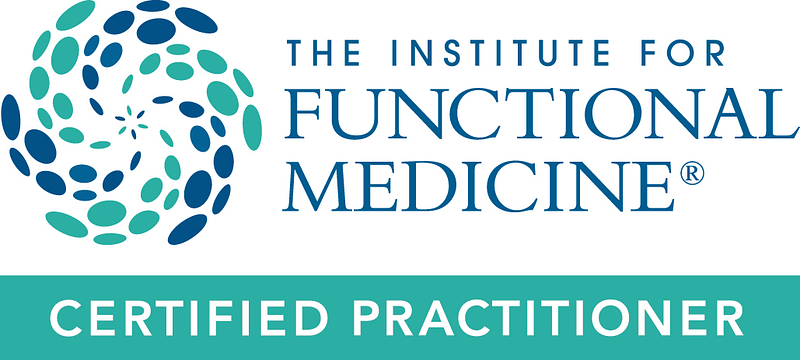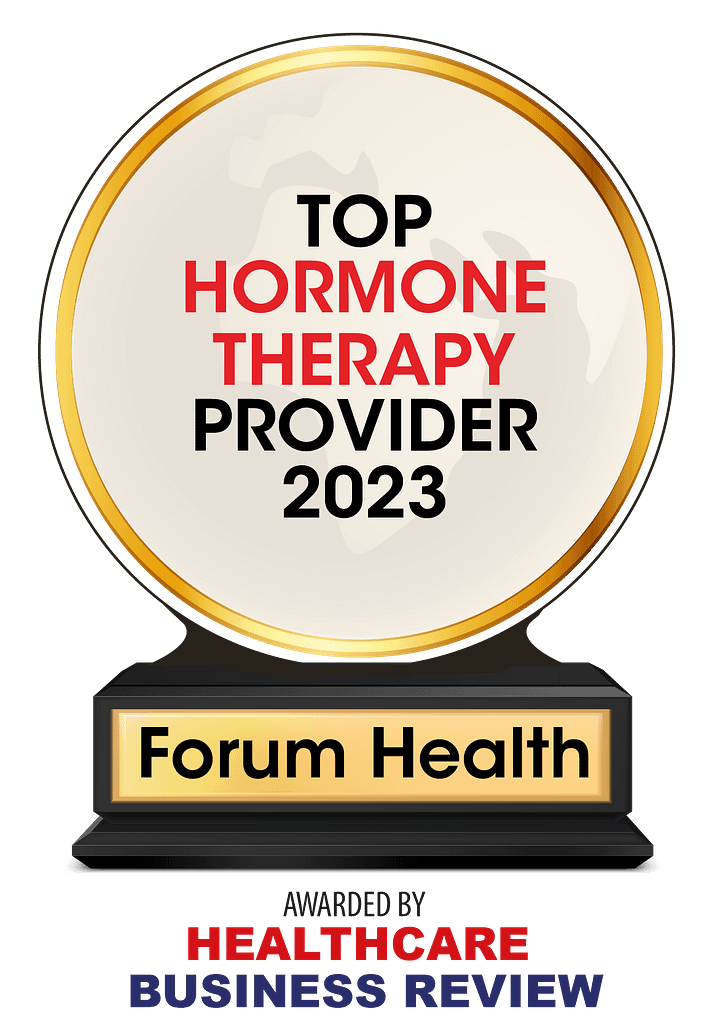No Laughing Matter
Testosterone poisoning, the rationale offered in jest by women to explain male behavior, is a medical rarity compared to its far less humorous counterpart – testosterone deficiency. An estimated five million American men are affected by hypogonadism, the medical term for low serum testosterone levels. Testosterone levels most often decline as a result of aging but can also be deficient from the effects of environmental toxins (especially those from plastics and pesticides), drugs, trauma, surgery, radiation, and abnormalities in hypothalamus or pituitary function.
A Man in the Making
Testosterone is an androgen, a hormone that gives men their male characteristics. Its effects include a deepened voice, increased body hair, maturation of genitals, increased sex drive, fertility, erectile function, ambition, and confidence. Testosterone supports the growth of muscles, bones, and sperm. Ninety-five percent of men’s testosterone is made from cholesterol in specialized cells called Leydig cells of the testicles in response to lutenizing hormone (LH), which is secreted by the pituitary. The remaining 5 percent is made by the adrenal glands.
Free at Last
About 60 percent of total circulating testosterone is not biologically available because it is permanently bound to a protein called sex hormone binding globulin (SHBG). Another 38 percent is more weakly bound to albumin. Testosterone bound to albumin can become free testosterone. The remaining two percent of testosterone is free and biologically active and is thus able to exert its powerful metabolic muscle.
A total serum testosterone level measures all forms of testosterone, bound and free. Because more testosterone is bound to SHBG as age increases, older patients, in particular, may be advised to have their free testosterone levels measured.
A Declining Portfolio
On average, men’s testosterone production peaks in the late teens and starts to decline about age 30 to 35. A 55-year-old man can have significantly less testosterone than during his youth, while an 80-year-old man can be running on fumes. The rate of free testosterone loss is roughly 1.5 percent each year. That?s 30 percent in 20 years. If your stock portfolio fell at that rate, no one would tell you that such a loss is expected with aging stocks. Yet patients with declining testosterone levels are expected to grin and bear their loss.
Signs and Symptoms of Age-Related Testosterone Deficiency
General physical weakness
– Decreased vitality
– Depression, uneasiness, anxiety, and irritability
– Decreased muscle mass
– Increased muscle pains
– Heart disease
– Low motivation for usual activities
– Increased body fat
– Osteoporosis
– Low sperm count
– Loss of sex drive
– Hot flashes
Increasing Life Expectancy
Deficient testosterone levels weren?t a health issue when men didn’t live long enough to experience many years without this life-enhancing hormone. The life expectancy of American men is currently 74.5 years, which means they can outlive their ability to produce adequate amounts of testosterone by 20 years.
Taking Pause
Women can usually find trained physicians to treat their age-related hormonal decline, menopause. However, men facing their age-related hormonal decline, andropause, often have difficulty finding a doctor to treat their dwindling vitality and health. Currently, there is about a 20-year gap in clinical experience between treating menopause and treating andropause.
Aim for the Right Target
Because testosterone production naturally declines with age, older men are often told by their doctors that their testosterone levels are “normal.” Having an age-adjusted ?normal? testosterone level at age 75 could, in fact, be the cause of seriously declining health, mood, and vigor. An appropriate and safe target when replacing testosterone for an aging man is the mid to upper limits of the normal range for a 40-year-old man.
Not Guilty by Association
Testosterone is classified as a steroid, along with other health-promoting substances, including cholesterol, cortisol, and Vitamin D. The misuse of synthetic anabolic steroids by athletes (and wanna-be athletes) in doses far higher than the body could possibly produce, have rightfully given synthetic steroids a bad name. Even though testosterone can be responsibly and safely prescribed, it has not escaped a “guilty by association” verdict by the public and even some medical professionals. Young athletes and body builders who take steroids to enhance performance far exceed steroid levels that the body is capable of producing are at high risk for developing serious, even fatal, side effects. In comparison, men whose deficient testosterone levels are restored to physiologically normal levels have far fewer risks.
Paths Often Traveled
Testosterone rapidly converts in the body by one of two major pathways. First, it can be converted to estrogen through the aromatization pathway. The enzyme aromatase, which is required for this conversion, is especially abundant in fat cells, a fact that puts obese men at higher risk for developing signs of feminization from excess estrogen. These signs include testicular atrophy, breast enlargement, loss of body hair, and loss of lean body mass. Monitoring estrogen levels of men taking testosterone replacement therapy (TRT) is thus recommended.
This spiraling loss of masculinity can be offset by weight loss, exercise, consumption of organic, non-genetically-modified soy powder, and avoidance of sugar and other refined carbohydrates. Fish oil, chrysin, and Diindolmethyl (DIM) can also decrease aromatization. DIM occurs naturally in cruciferous vegetables: broccoli, cauliflower, brussel sprouts, collards, kale, and cabbage.
The second pathway that testosterone can take in the body is its conversion to dihydrotestosterone (DHT), the most significant biologically active form of testosterone. This conversion requires the enzyme 5-alpha-reductase, which is especially abundant in the prostate gland. Nearly all testosterone that enters the prostate gland is converted to DHT, which, in turn, stimulates the growth of normal prostate cells. Some scientists and clinicians theorize that DHT can also stimulate the growth of abnormal or cancerous prostate cells.
If developing prostate cancer was simply a result of high levels of testosterone or DHT, a lot of 20-year-old men would be diagnosed with it, because the production of testosterone and DHT is at its highest in young men. The incidence of prostate cancer actually is highest at ages that are associated with the lowest levels of testosterone and DHT in older men. Obviously, other factors contribute to the development of prostate cancer. Because the incidence of prostate cancer is highest at the time of life when men’s estrogen levels are highest, imbalances or excess of estrogen are thought to contribute to the risk of developing prostate cancer.
An Evolving Understanding
Several studies have found a lack of causative relationship between androgen levels and prostate cancer. In a Finnish study involving 16,481 men aged 18 to 78 years, blood samples were drawn between 1966 and 1972. Twenty-five years later, 166 of the men had developed prostate cancer. When levels of testosterone, DHT, and SHBG in men who developed prostate cancer were compared with those in 300 men who did not, no association was found between high androgen levels and prostate cancer.
Every man needs a digital rectal exam of his prostate and a prostate-specific antigen (PSA) blood test prior to starting TRT and at regular intervals during treatment. Men should report any change in their breasts to their doctor.
The presence of male breast cancer, prostate cancer, an elevated prostate-specific antigen (PSA), or a suspicious digital rectal exam is a contraindication for TRT in the United States at this time.
Testosterone’s Benefits
The heart is a muscle, and like any other muscle, it improves in strength and efficiency (a particular benefit in congestive heart failure) when there are adequate levels of testosterone. Whether it is “homemade” or “store-bought,” testosterone has been shown to lower levels of total cholesterol and Lp(a), a fat linked to heart disease risk.
The benefits of TRT in treating impotence can be especially rewarding for a man who has previously been told by his doctor that his “low normal” levels of testosterone are unrelated to his inability to get or maintain an erection. In fact, the boost given to age-related, diminishing sexual performance is one of testosterone?s starring roles.
TRT can enhance vitality, confidence, and cognitive functioning, in addition to decreasing anxiety. Improved muscle strength and visual-spatial performance (necessary for balance that plays an important role in preventing falls) that are associated with adequate testosterone levels help maintain mobility and, therefore, functional independence.
In short, utilizing TRT in older men who have a proven deficiency in testosterone, can help add quality to their years both physically and psychologically.
Safe Prescribing of TRT
Prescribing some hormones (e.g., thyroid hormone or insulin) is a routine, accepted standard of care in medical practice. However, replacement of the hormone testosterone is (most unfortunately for men who suffer from its deficiency) often overlooked.
Considering a patient’s lifestyle, personal preferences, and compliance with therapy regimens, a single injection of long-acting, slow-release testosterone every two to three weeks may be the best option to boost lagging testosterone levels for some men. Others may be prescribed bio-identical testosterone drops, topical gels, or patches applied daily.
Replacing only what the body would normally make (physiological, not pharmaceutical dosing), monitoring TRT with laboratory tests, and tweaking other hormones (thyroid, adrenal, etc.) at the same time that testosterone is taken all contribute to TRT’s effectiveness.
Testosterone Poisoning
Excess testosterone has several known adverse effects. These include acne and fluid retention; increased production of red blood cells (which creates a greater likelihood of clot formation); aggression, infertility, and worsened sleep apnea.
Because a healthy liver breaks down testosterone and estrogen every day for eventual excretion from the body via the kidneys, abnormal liver function can contribute to excessive hormone levels.
In Summary
Because an excess and a deficiency of testosterone both have serious health risks, moderation and balance are the guiding principles for safe, effective TRT.
For several decades, alternative doctors have safely and responsibly prescribed TRT for men who have dwindling health associated with age-related testosterone deficiency.
TRT is best accomplished in a holistic context that includes a thorough medical history and physical exam, a healthy diet, nutritional supplementation, and exercise, in addition to regular laboratory monitoring and clinical follow-up.









